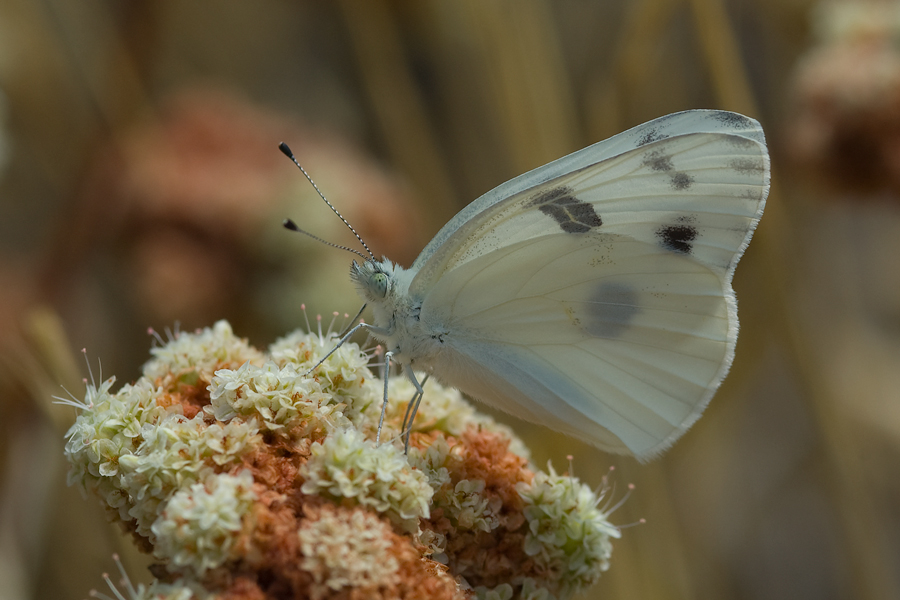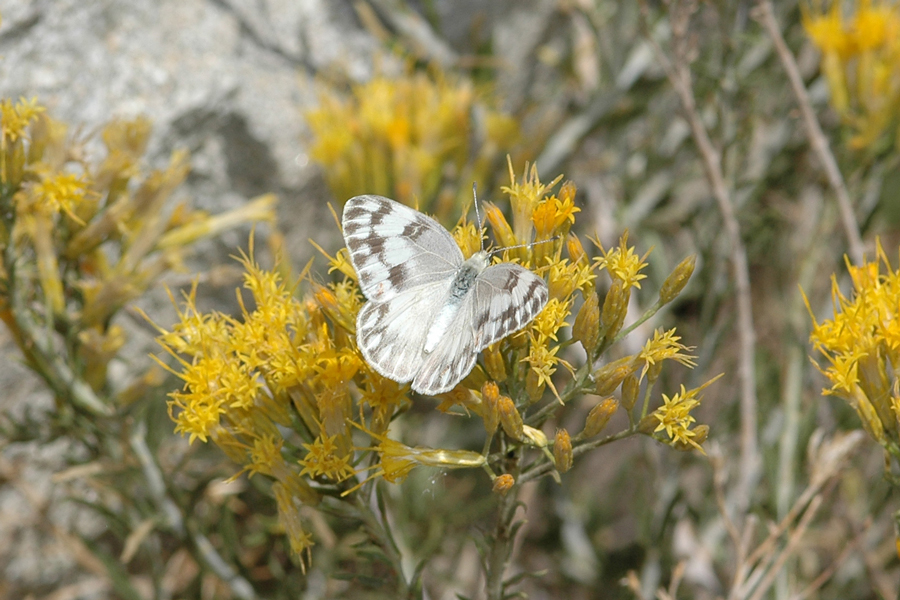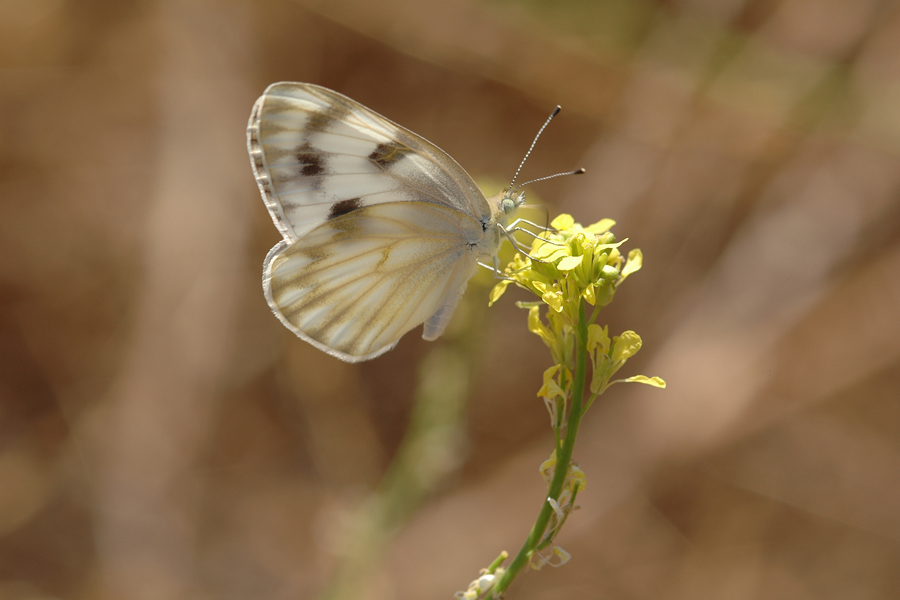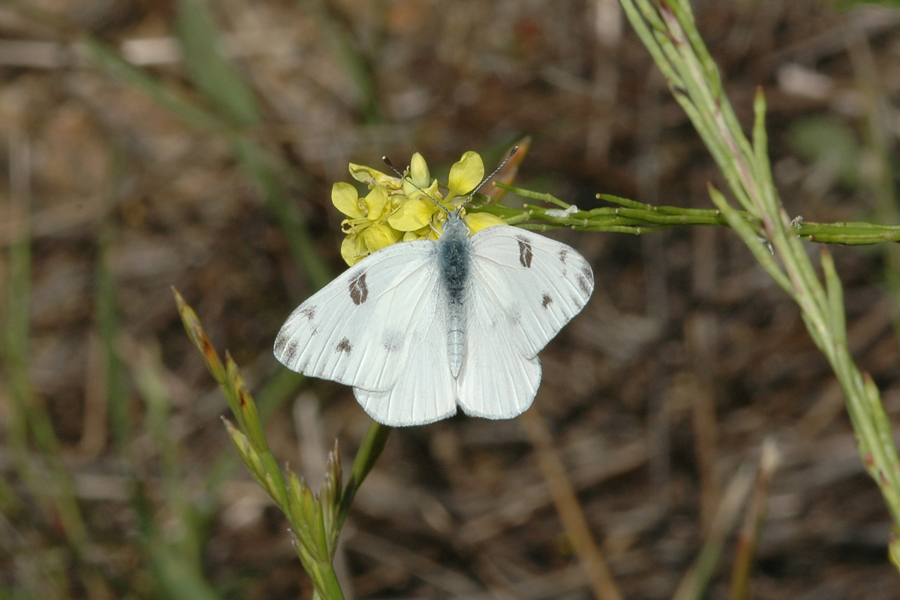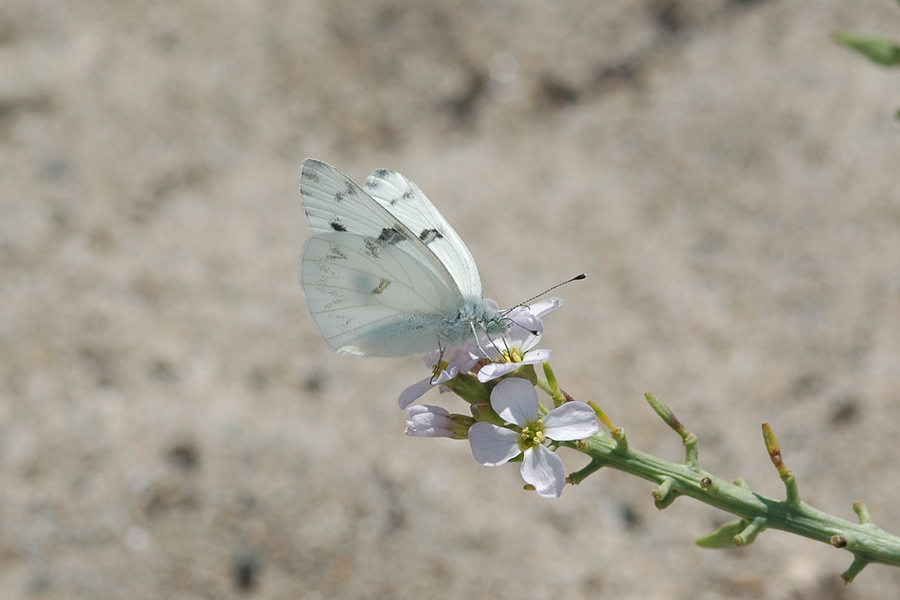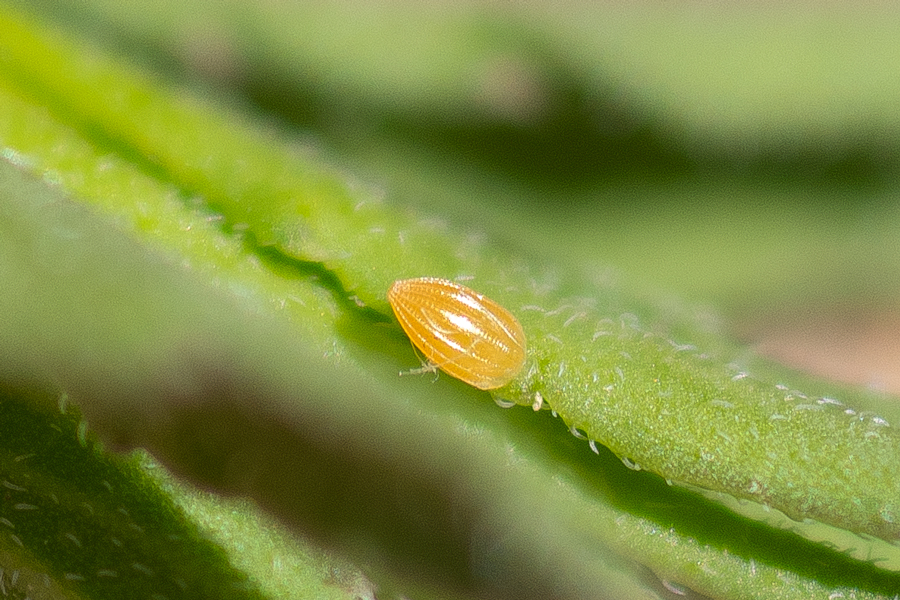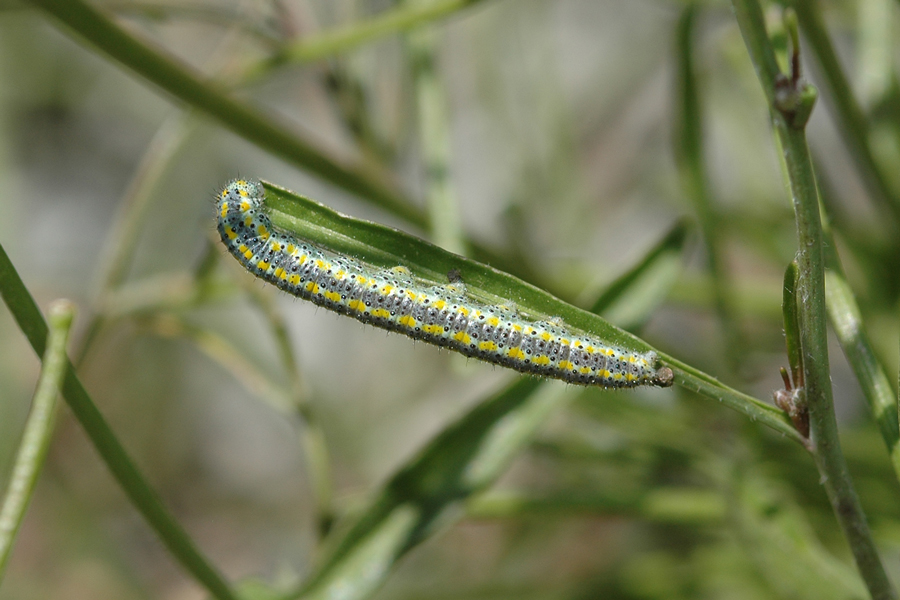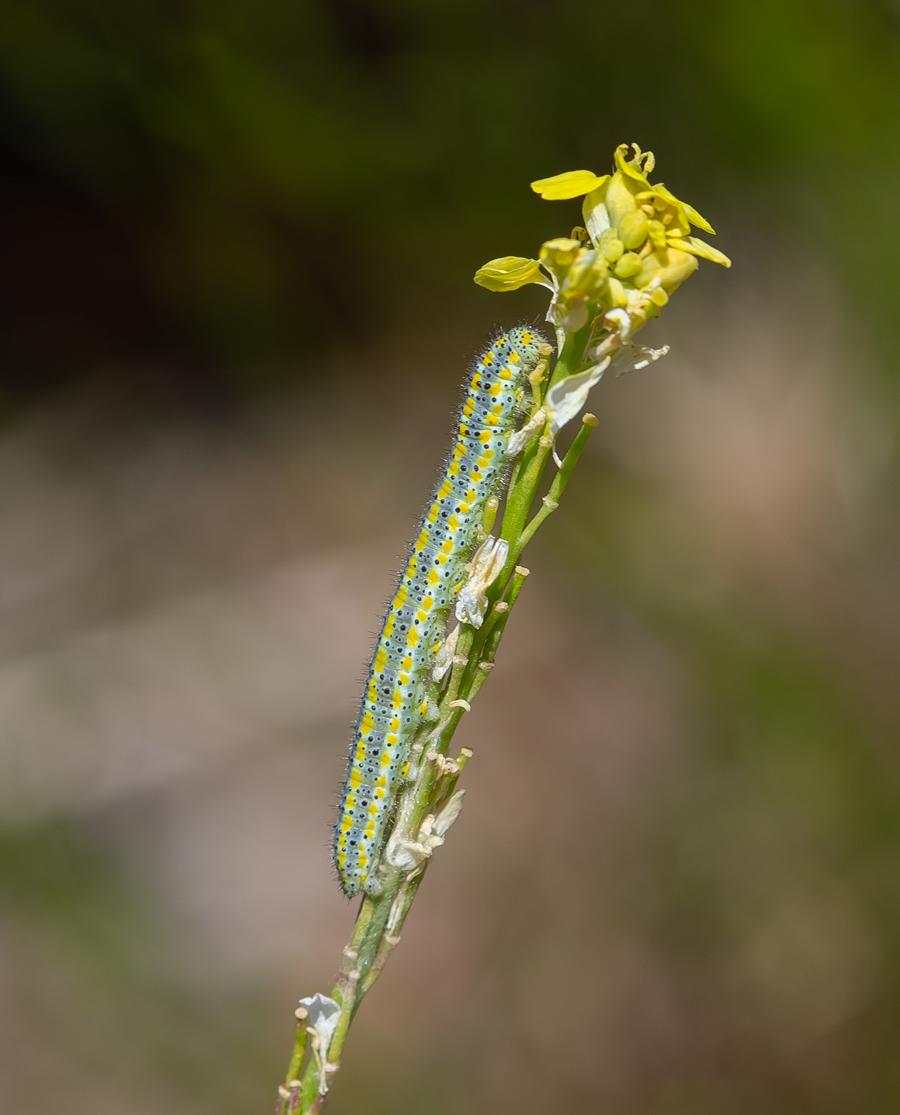Pontia protodice
Checkered White
A common white found nearly anywhere outside urban areas and most of the year. Much less common in suburban gardens than the cabbage white, which thrives in gardens, while protodice uses a variety of native and non-native mustards (Brassicaceae). I've found a larva on bladderpod - Peritoma arborea - at Rattlesnake Canyon in Johnson Valley; that's in the Cleomaceae (caper family), which is closely related to the Brassicaceae. I've seen them just a few times in my garden in Long Beach, but they do fly in open areas where there are wild mustards even within cities. In rural fields, they can be abundant. Females are more heavily patterned than males. I've found the caterpillars several times on wild mustards - they use just about anything in that family. This is our native "common" white butterfly; Pieris rapae has taken that role in populated areas, but it's a relatively recent (1860s) migrant.
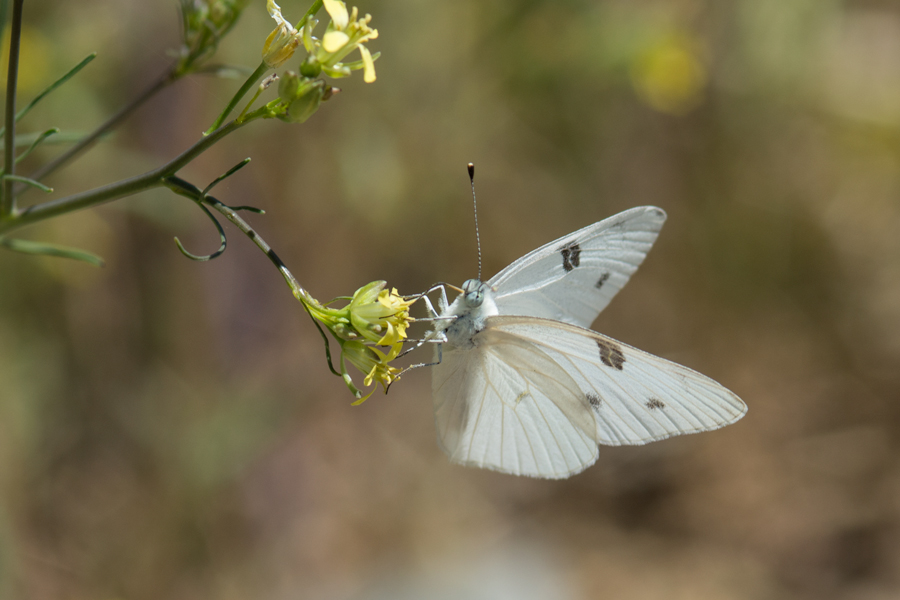
A male Pontia protodice sipping roadside mustards east of Big Bear Lake. Males can show nearly all-white undersides. May 28, 2017.
Another male taking nectar at California buckwheat in Riverside Co., September 4, 2011.
Female checkered white - Pontia protodice - McGill Trail below Mt. Piños. August 7, 2007.
Female protodice at Malibu Creek State Park, July 26, 2005.
Male checkered white - Pontia protodice - at Mystic Canyon in the San Gabriels, May 28, 2006.
Male protodice at Bolsa Chica, OC, April 10, 2008.
I watched a checkered white ovipositing and got this shot of the egg a couple of days later. It darkened a bit over the two days, probably meaning it was fertile. At Keen Camp Summit in the San Jacintos. June 21, 2023.
Larva of a checkered white at Icehouse Canyon near Mt Baldy. May 31, 2008.
Right in the parking lot of the trailheads to the Sawmill Trail and Cactus Spring Trail, I found several checkered white larvae on a single wild mustard plant (Hirschfeldia incana), a non-native from the Mediterranean.
©Dennis Walker

